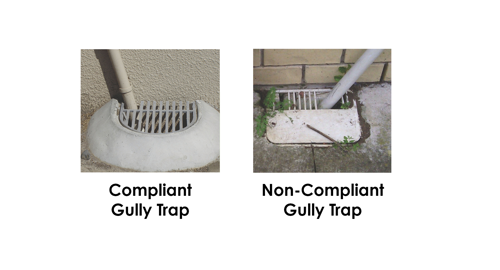Gully trap inspections tracking well
18 Mar 2024, 7:09 PM

Waitomo District Council’s project to identify potential risks to its stormwater and wastewater network is tracking well.
Council’s water services staff have been on the ground since July last year going door-to-door throughout Te Kūiti undertaking visual checks on private stormwater and wastewater outlets. This includes inspecting gully traps and downpipes to identify potential risks to the network.
Gully traps (pictured) are connected to a house and must be installed no less than 25mm above a paved surface such as a concrete driveway or foot path and no less than 100mm above an unpaved surface such as gardens and grass areas.
Non-compliant gully traps can impact a property and the network during a storm and can lead to severe flooding.
Downpipes from the roof should be connected to a private soakhole or a stormwater network with Council approval. Downpipes should not be connected to the wastewater network.
General Manager Infrastructure Services, Shyamal Ram says cyclones and heavy rain events are becoming more frequent, and Council has recognised the need to build more resilience in both the stormwater and wastewater network.
“The wastewater network is only designed for wastewater discharges. Stormwater ending up in the wastewater system overloads the network leading to wastewater overflows,” says Shyamal.
“During heavy rain events, wastewater can overflow and get into our waterways which has a detrimental effect on our environment.
“It also overwhelms our wastewater system and can increase up to 10 times more than the average daily flow, which then causes overflows. One non-compliant roof downpipe connected to the wastewater equates to 40 dwellings.
“This increases the cost associated with wastewater pumping and treatment and can lead to the contamination of private properties and the environment.
“Identifying potential risks to the network should make a difference to the resilience of the wastewater network during storms.
The project is being undertaken in several stages, with Te Kūiti inspections due to be completed later this year. Once Te Kūiti inspections are complete, staff will move to Piopio and Maniaiti/Benneydale.
Council staff will be clearly identified and prior notice will be given.
A calling card will also be left after the inspection with details of Council’s inspection.
“So far, we have identified several non-compliant gully traps and a few downpipes illegally connected to the wastewater network.
“We would appreciate it if residents were helpful when our staff call around, as it would make our job much easier,” says Shyamal.
